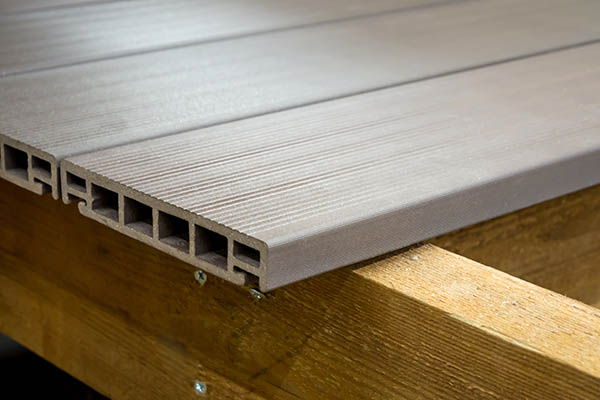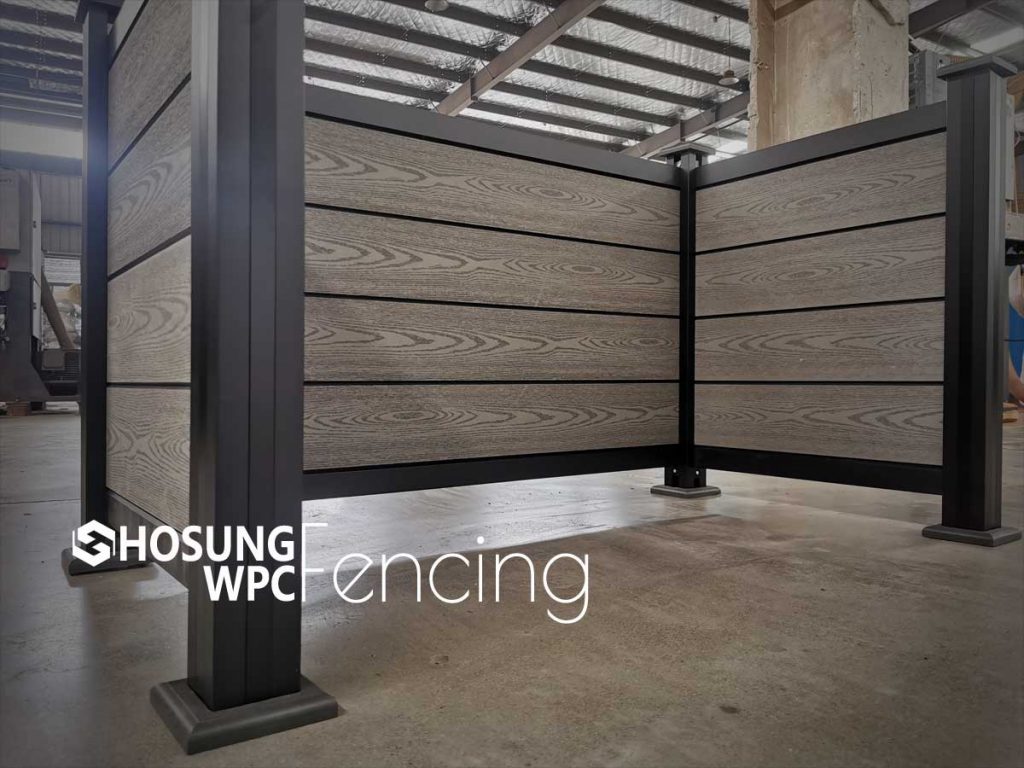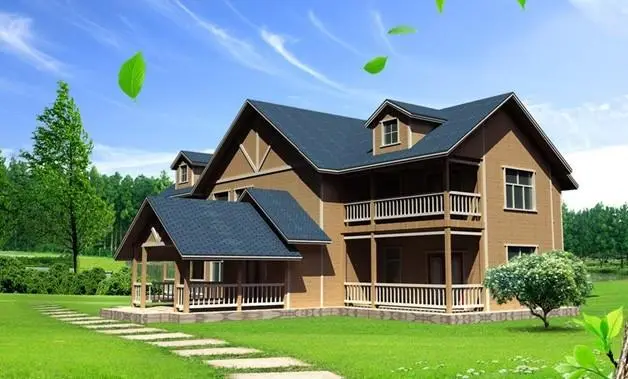Hollow composite decking has become a popular choice for outdoor spaces due to its durability, low maintenance, and eco-friendly properties. Combining the natural look of wood with the benefits of composite materials, it offers long-lasting performance and resistance to moisture, UV rays, and insects. Whether you’re building a new deck or upgrading an existing one, understanding the benefits and installation tips of hollow composite decking will help you make an informed decision. In this article, we’ll explore its advantages, ideal applications, and why it’s the perfect solution for modern outdoor living.
Table of Contents
Introduction to Hollow Composite Decking: What It Is and Why It Matters
In the world of outdoor construction and landscaping, hollow composite decking has emerged as a revolutionary solution for modern homeowners and commercial developers alike. As outdoor living spaces become extensions of indoor comfort and style, the demand for durable, low-maintenance, and visually appealing decking materials continues to rise. Hollow composite decking sits at the intersection of affordability, functionality, and design flexibility, offering a smart alternative to both traditional wood and solid composite boards.
But what exactly is hollow composite decking?

Unlike solid boards, which are dense and heavy, hollow composite decking boards are engineered with internal voids (typically cylindrical or rectangular). These cavities reduce material usage and weight without significantly compromising structural integrity. The result is a lighter board that is easier to handle, transport, and install—especially for DIY projects or rooftop decks where weight is a concern.
Manufactured using a blend of recycled plastics and wood fibers (a technology known as Wood Plastic Composite, or WPC), hollow decking offers an eco-conscious choice without sacrificing strength or style. It can replicate the look and feel of natural timber, but with enhanced resistance to moisture, rot, insects, and fading.
One of the leading innovators in this space is Hosung WPC, a trusted name known for its quality manufacturing of WPC hollow decking products. Their commitment to sustainability and product performance has made them a preferred choice in various global markets, especially in regions with fluctuating weather conditions.
Moreover, as consumer awareness about environmentally responsible building materials increases, wpc hollow decking is gaining popularity for its reduced carbon footprint and long-lasting performance. Whether you’re building a backyard deck, a pool surround, or a rooftop terrace, understanding what hollow composite decking is—and why it matters—sets the foundation for making informed design decisions.
In the sections that follow, we’ll explore the many benefits of hollow composite decking, compare it with solid alternatives, discuss best practices for installation, and offer maintenance tips to ensure your outdoor space remains beautiful and functional for years to come.
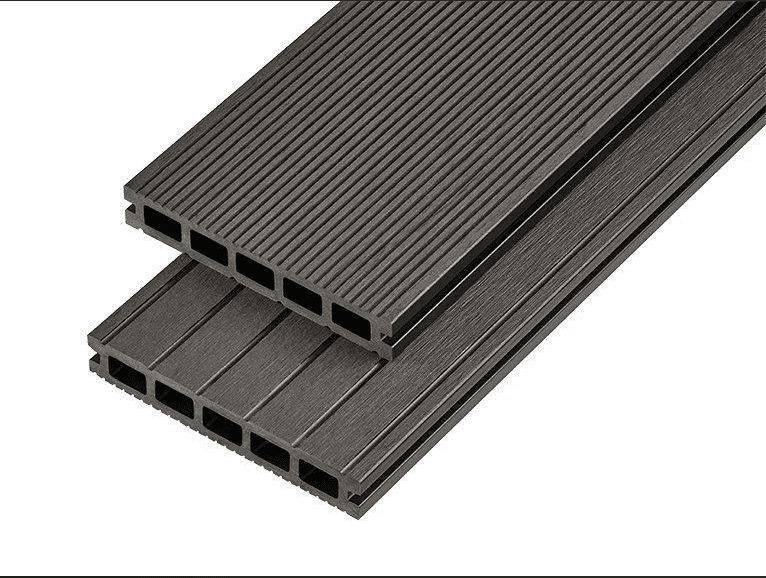
Advantages of Hollow Composite Decking for Modern Outdoor Spaces
Choosing the right decking material can significantly impact the durability, aesthetics, and overall performance of your outdoor space. Among the growing list of options, hollow composite decking stands out as a popular and practical choice—especially for those seeking a balance between cost-efficiency and performance. Below are the key advantages that make hollow composite decking an ideal solution for a wide range of outdoor applications.
🪶 1. Lightweight and Easy to Handle
One of the most significant benefits of hollow composite decking is its lightweight structure. Thanks to its internal cavity design, these boards are considerably lighter than both solid composite and traditional timber decking. This makes them easier to transport, lift, and install—especially in high or restricted areas such as balconies, rooftops, or multi-level decks.
For DIY enthusiasts, the reduced weight means quicker and less strenuous installation. For professional contractors, it translates into faster project timelines and potentially lower labor costs.
💰 2. Cost-Effective Without Compromising Quality
Because they require less material during manufacturing, hollow composite decking boards are generally more affordable than their solid counterparts. Yet, they still maintain a high level of durability and structural performance for typical residential and light commercial use. This makes them an excellent option for homeowners and property developers looking to optimize their budgets without cutting corners on aesthetics or resilience.
🛡️ 3. Enhanced Moisture Resistance and Weather Durability
Like all WPC products, hollow decking boards are designed to resist common outdoor threats such as moisture, mildew, insects, and UV rays. Unlike natural wood, they won’t rot, warp, or splinter over time—even when exposed to harsh climates. Many brands also apply UV stabilizers and co-extruded protective layers, further extending the lifespan of the decking.
Moreover, hollow boards offer slightly improved thermal expansion and contraction behavior, reducing the risk of warping in fluctuating temperatures.
🔧 4. Simplified Installation Options
Thanks to their reduced weight, hollow composite decking boards are easier to cut and secure in place. Most systems are compatible with hidden fastening clips, which not only simplify installation but also enhance the visual finish by eliminating visible screws or nails.
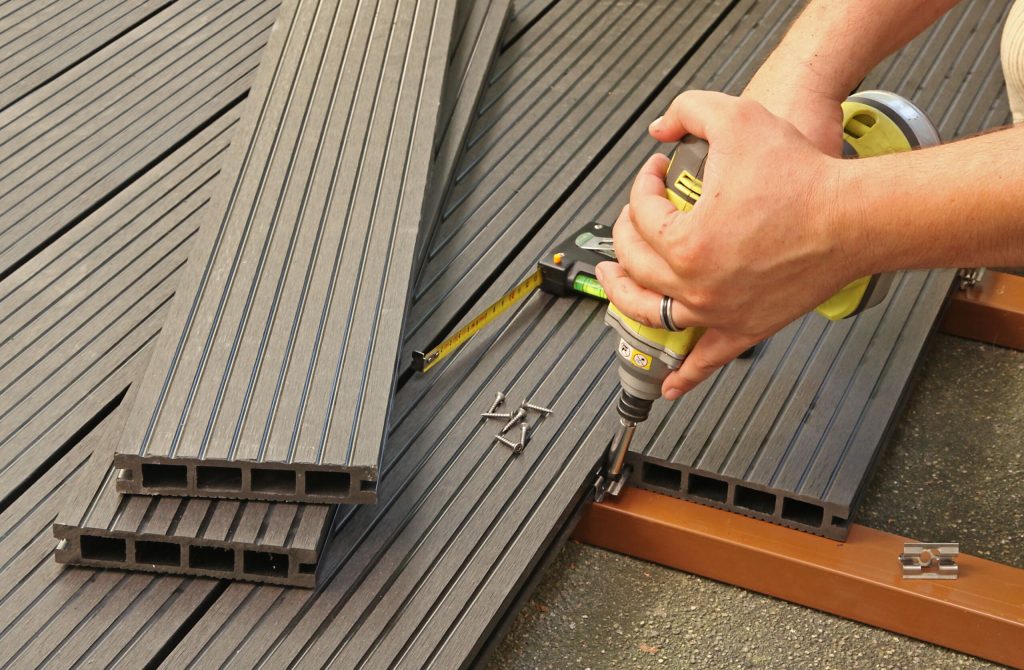
Some manufacturers design hollow boards with a symmetrical profile that allows reversible installation, offering greater flexibility in layout and orientation.
🌱 5. Environmentally Friendly Choice
Most hollow composite decking products are manufactured using recycled wood fibers and plastics. This minimizes the need for virgin raw materials and helps divert plastic waste from landfills. Additionally, because the boards are long-lasting and require no painting or staining, they contribute to a lower overall environmental impact over their lifecycle.
If sustainability is a key concern, brands like Hosung WPC are leading the way with eco-friendly manufacturing processes and recyclable packaging, making them a smart pick for green building projects.
💧 6. Improved Drainage and Airflow
The hollow core structure of these boards naturally promotes better water drainage and airflow beneath the surface. This helps keep the substructure drier, which is especially important in wet or humid regions. Enhanced airflow also contributes to faster drying times, reducing the chance of mold or mildew buildup.
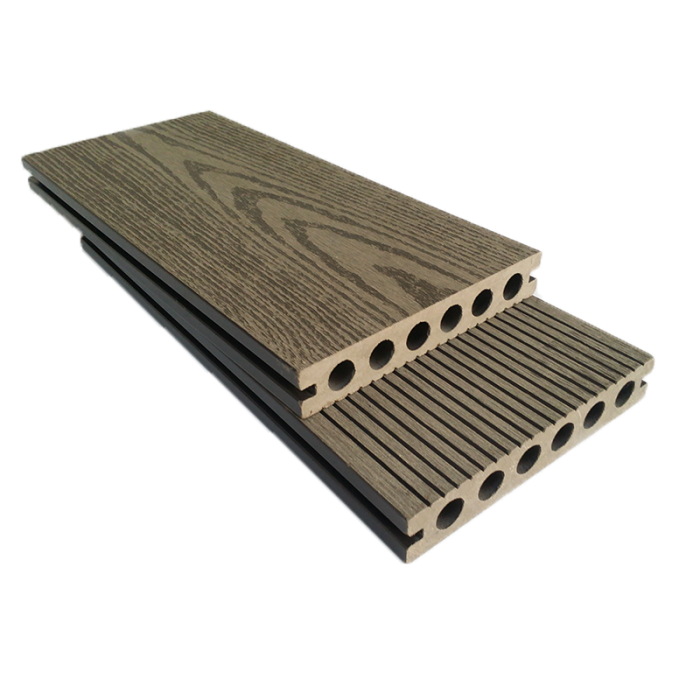
Comparing Hollow Composite Decking and Solid Composite Decking
When it comes to composite decking, one of the most important decisions homeowners and builders must make is choosing between hollow composite decking and solid composite decking. Both options offer considerable benefits over traditional wood, but they differ significantly in terms of structure, cost, application, and performance. Understanding these differences will help you choose the right type for your project.
🔩 Structural Design
Hollow Composite Decking: As the name suggests, hollow boards are constructed with internal voids, either circular or rectangular. These cavities reduce the overall weight of the board while still offering good strength for standard residential use.
Solid Composite Decking: These boards are completely dense throughout, mimicking the structure of traditional lumber. As a result, they are heavier and typically more robust, which can be advantageous for high-traffic or load-bearing areas.
⚖️ Weight and Handling
Hollow boards are significantly lighter, making them easier to carry, cut, and install. This can be especially beneficial for rooftop decks, raised patios, or DIY projects where handling heavy materials would be cumbersome.
Solid boards require more effort to move and install, often needing two-person handling, but they offer added stability underfoot, especially in commercial or high-use settings.
💵 Cost Considerations
Hollow composite decking is usually more affordable due to reduced material usage during production. This makes it attractive for cost-conscious homeowners and large-scale developments.
Solid boards are more expensive, but the higher price tag often comes with greater structural strength and perceived premium quality, which some buyers prefer.
🧱 Installation Flexibility
Hollow boards are easy to work with and often come with universal clip systems for hidden fastening, which results in a cleaner surface look.
Solid boards may offer more design profiles, such as grooved edges or surface finishes, and can be more versatile for custom edges, curves, or borders, but they require more effort to install.
🌦 Durability and Climate Performance
Solid composite decking typically has a slight edge in extreme climates due to its mass and density, offering better resistance to thermal movement and higher impact loads.
However, modern hollow composite decking—especially from quality manufacturers like Hosung WPC—features advanced co-extrusion layers and UV protection that significantly improve its resistance to warping, fading, and surface wear.
🧽 Maintenance Requirements
Both types are low-maintenance when compared to wood, requiring only periodic cleaning with water and mild soap. Neither needs staining, sealing, or sanding. However:
Hollow boards may require end caps to prevent debris or insects from entering the hollow chambers, especially on open ends or edges.
Solid boards don’t require end caps but may be more susceptible to minor surface scratches or scuffs simply because of their solid mass.
🎯 Best Use Scenarios
| Use Case | Recommended Type |
|---|---|
| Rooftop decks | Hollow composite decking |
| Budget-conscious projects | Hollow composite decking |
| High-traffic commercial use | Solid composite decking |
| Ground-level decks | Solid composite decking |
| DIY home renovations | Hollow composite decking |
| Custom edge detailing | Solid composite decking |

Ideal Applications: Where Hollow Composite Decking Works Best
Not all decking projects have the same structural demands, aesthetic goals, or environmental challenges. That’s why selecting the right type of material—such as hollow composite decking—is crucial for both functional success and visual appeal. In this section, we’ll look at the types of projects where hollow composite decking truly shines.
🌆 1. Rooftop Terraces and Balconies
Weight is a major concern in rooftop installations. Too much load can compromise the structural integrity of the underlying building. This is where hollow composite decking becomes a game-changer. Its lightweight composition minimizes the load on rooftops and balconies, making it safer and more practical for elevated structures.
Additionally, it’s easier to carry up multiple flights of stairs or lift using cranes, reducing labor effort and installation time.
Bonus Tip: Pair hollow boards with adjustable pedestals for level rooftop systems that allow for hidden cable routing or drainage underneath.
🏡 2. DIY Home Improvement Projects
Whether you’re a weekend warrior or a home renovation hobbyist, hollow composite decking is a DIY-friendly material that doesn’t require specialized tools or professional installers. Its ease of cutting, drilling, and fastening means you can build a small deck, garden path, or even modular patio without much experience.
Many hollow boards come with tongue-and-groove or clip systems that simplify the process even further.
🏖️ 3. Poolside Decks and Wet Areas
Because of its resistance to moisture, mold, and mildew, hollow composite decking is an excellent option for areas exposed to water—such as pool surrounds, hot tubs, and outdoor showers. Unlike timber, which can become slippery, warp, or rot, composite materials stay stable and safe underfoot.
Some hollow boards even include textured surfaces or anti-slip treatments to enhance safety in wet conditions.
🛣️ 4. Large-Scale Residential Developments
For property developers building large housing estates, apartment complexes, or resort-style accommodations, cost and scalability matter. Hollow composite decking offers a reliable and visually attractive option that keeps material and transport costs down, especially when purchasing in bulk.
Its consistent profile and lightweight nature also streamline the installation process across multiple units or homes, speeding up delivery timelines.
🧒 5. Children’s Play Areas and School Campuses
Safety and maintenance are top priorities for playgrounds and school yards. Hollow composite decking offers a splinter-free surface that doesn’t leach chemicals, making it a child-safe choice. Additionally, its low maintenance and long lifespan reduce ongoing costs for educational institutions.
Hollow boards can also be used to create pathways, ramps, outdoor stages, or reading corners in educational settings.
🪴 6. Temporary Installations and Portable Decking
Due to its lightweight nature and easy disassembly, hollow composite decking is suitable for temporary outdoor setups such as event stages, garden exhibitions, or portable cabins. Boards can be installed quickly, reused multiple times, and stored compactly.
This makes them a sustainable and practical choice for construction contractors, event planners, and landscape designers working on short-term projects.
🔍 Key Takeaways
Choose hollow composite decking for elevated, moisture-prone, or weight-sensitive spaces.
It’s especially suitable for DIYers, developers, schools, and eco-conscious projects.
Versatility, affordability, and user-friendly installation make it a favorite across various industries.

Conclusion
Hollow composite decking is an excellent choice for anyone looking for a durable, low-maintenance, and eco-friendly decking solution. Its lightweight structure, resistance to moisture, and ease of installation make it ideal for various outdoor projects, from rooftops to poolside decks. While the initial cost may be higher than traditional wood, the long-term savings in maintenance and replacement make it a cost-effective option over time. Additionally, by choosing composite decking, you contribute to sustainability efforts, as it is made from recycled materials and offers a longer lifespan than wood. Overall, it provides perfect blend of functionality, aesthetics, and environmental benefits, making it a smart investment for both homeowners and builders. Looking for hollow or solid composite decking manufacturer? Welcome to contact Hosung WPC. Our sales manager will reply you soon.

